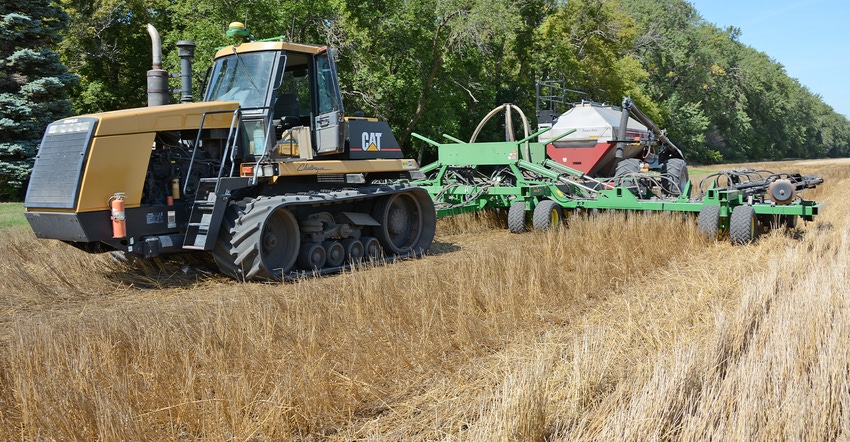January 23, 2020

In the wettest year on record for South Dakota, half the cropland in the state that was planted used a cropping system without tillage. That system, no-till farming, has been the predominant cropping system on South Dakota cropland in recent years, but this is the first year the practice was used to plant 50% of the state’s crops.
“It’s a milestone for farmers in this state. The incredibly wet weather we had the previous fall and in the spring of 2019 complicated planting for most farmers, and may have contributed to them meeting that milestone,” Jeff Zimprich, state conservationist for the U.S. Department of Agriculture’s Natural Resources Conservation Service, told an audience at the recent Ag Horizons Conference in Pierre.
NRCS has tracked tillage systems and no-till for 37 years to help measure progress in the use of soil saving and soil building farming systems.
“This highest ever percentage of no-till may be because one heavy rainfall after another during the spring planting season left only a very narrow window for planting, and the more stable soil structure that’s developed with no-till systems and cover crops allowed no-till producers to plant fields that were not overwhelmingly saturated during that narrow window,” Zimprich said. “Or it may be there’s more interest in no-till and healthy soils. In either case, more no-till systems and cover crops are a bonus to producers and all of us who live in South Dakota, because healthier soils and cleaner water are benefits that we can all enjoy.”
While the 2019 Cropping Systems Inventory conducted by NRCS showed no-till use matched the combined use of full width tillage methods including mulch till, reduced tillage and conventional tillage, the acreages of all cropping systems were down significantly because 4 million acres of crops weren’t planted in 2019. NRCS didn’t include unplanted or “prevent plant” acres in the inventory because the survey points are observed after planting.
NRCS inventories since 2004 show the use of conventional tillage, which leaves the least amount of ground surface protected by crop residues, has remained fairly level at about 17%. No-till percentage has grown from a 37% share of total cropping system use in 2004 to 50% this year. “The increase in no-till percentage is coming from farmers who are moving from high-residue tillage systems to not tilling at all,” Zimprich said. “More farmers could well be moving in that direction because no-till is a key practice used with cover crops and crop rotations to regenerate and build healthy soils.”
There’s a perception among many farmers that wet soils need to be tilled to dry out for planting, but in 2019, a really tough year, fewer no-till acres went unplanted compared to full width tillage systems, including conventional tillage. Estimated unplanted acres in each cropping system in 2019 were no-till, 20%; mulch tillage, 39%; reduced tillage, 38%; and conventional tillage, 27%.
More than 900,000 acres of cover crops were planted in South Dakota last year. Nine counties now have more than 30,000 acres of cover crops, and another 22 counties have between 10,000 and 30,000 acres. Twenty counties, mostly in central South Dakota, have more than 75% of their cropland under no-till systems.
With no-till farming systems, the soil is left undisturbed from harvest to planting, and the planting process disturbs only a small part of the soil surface as seeds are planted into the ground. Other systems, including mulch till, reduced tillage and conventional tillage, disturb the entire soil surface and bury varying amounts of residues from previous crops.
You can read the full report online.
Source: NRCS South Dakota, which is solely responsible for the information provided and is wholly owned by the source. Informa Business Media and all its subsidiaries are not responsible for any of the content contained in this information asset.
You May Also Like




